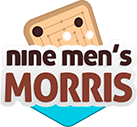Description
The Chess Game requires two players and a board is used to play.
- Players - 2
-
Pieces - 32 chessmen, 16 white pieces and 16 black pieces. Both colors
have:
- 2 Rooks;
- 2 Knights;
- 2 Bishops;
- 1 Queen;
- 1 King;
- 8 Pawns;
- The Board - It consists of 64 squares: 8 ranks/rows (denoted with numbers from 1 to 8) and 8 files/column (denoted with letters from 'a' to 'h') arranged in 2 alternating colors: light and dark.
- Object of the game: to checkmate the opponent's king or make your opponent resign.
Definitions
- Check - King under threat
- Checkmate - King under threat with no way out.
- Capturing - A piece takes the square where the opponent's piece stands and removes it from the board/game.
- Move History - A record of all moves carried out in one match.
- Save Match - Save the match to play it at a later time. Option only available in the Casual Lounge.
- Load Match - Load a previously saved match. Option only available in the Casual Lounge.
The Game:
The board must be placed in such a way its first square to the left of each player ('a1' for the white pieces and 'h8' for the black pieces) is a dark color square. The player with the white pieces starts the game by making the first move. The players then keep taking turns and making their moves until the end of the game.
Moving the pieces (chessmen):
- The Rook: The Rook can only move horizontally (rows/ranks) or vertically (files/columns)
- The Bishop: The Bishop can only move diagonally.
- The Queen: The Queen can move EITHER horizontally as well as vertically just like the Rook, OR diagonally, just like the Bishop.
- The King: The King can move in any direction but not farther than one square each turn. The King can NEVER be moved to a square where it will be in check.
- The Pawn: The Pawn can only move forwards, never backwards. Just like the King, the Pawn can only move one square each turn. However, it can move two squares forwards when leaving its starting position.
- The Knight: The Knight is the only piece which can leap over the other chessmen. All leaps take place in an L shape fashion: 2 squares in any direction (vertical or horizontal) plus 1 more square perpendicularly.
- No piece is allowed to stand on the same square as that of another piece of the same color.
- When your piece lands on a square occupied by the opponent's, his/her piece is then captured.
- The Pawn can only capture pieces that are one square diagonally ahead either to the right or to the left.
Special Moves
- Castling is a special move in the game of chess involving the king and either of the original rooks of the same color. Castling consists of moving the king two squares towards a rook, then moving the rook onto the square over which the king has crossed. This can only be done when:
- the King's first move occurs at the moment of castling. Thus the King has to be in its starting position.
- the Rook's first move occurs at the moment of castling. Thus the Rook has to be in its starting position as well.
- the squares through which the King moves are not under threat by any of the opponent's chessmen.
- there are no pieces/chessmen blocking the path through which the King and the Rook moves.
- En passant capture: This is a special kind of capture done by Pawns. En passant Capture Rules:
- The Pawn to be captured must move through 2 squares in its initial move
- If there is an opponent's Pawn on an adjacent file next to its destination square, then the opponent's Pawn can capture it and move to the square the pawn has passed over, but only on the next move.
Prawn Promotion
When a Pawn reaches the last rank on the board (rank 8 for the white and rank 1 for the black), it is then promoted. The player has to replace it by one of the following chessmen:
- Queen;
- Rook;
- Bishop or;
- Knight;
Winning the game
There are only 2 ways to win in Chess:
- to checkmate the opponent's king;
- when the opponent resigns.
In the Ranked Rooms a player can also win when his/her opponent reaches the game time limit.
Draws
A match comes to a draw when:
- there are no more legal moves left;
- a player offers a draw and the other player accepts it
- there are not enough pieces to checkmate. It is considered Insufficient when there are only:
- The King and 1 Bishop;
- The King and 1 Knight;
- The King and 2 Knights against 1 King alone.
A draw also occurs when: - A player delivers perpetual check;
- After 50 moves, no piece is captured and no Pawn is moved.
- When the same position occurs 3 times during the match, that is, a Threefold.
Learn how to play other Traditional Board Games
Amplify your knowledge at Board Games reading the rules and watching videos from similar games to Chess .











